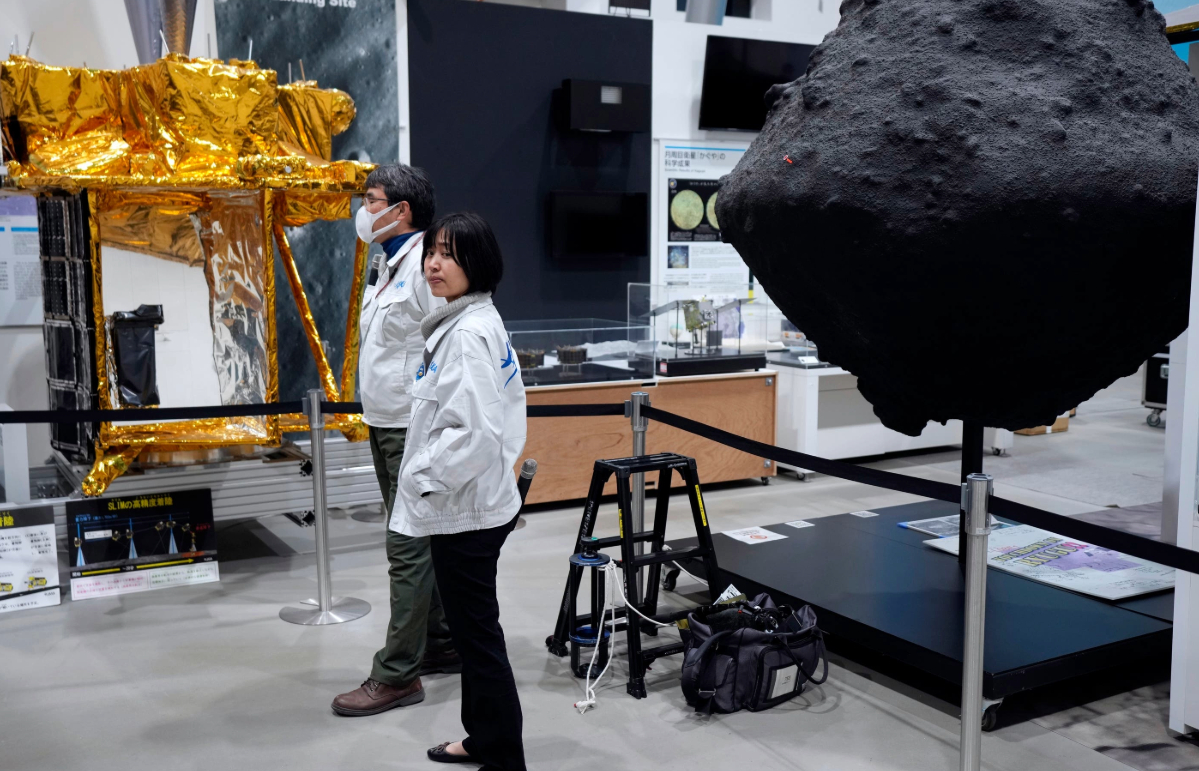In a first for Japan, the SLIM mission stuck a pinpoint landing on the Moon. How long the mission lasts depends on whether the solar cells begin charging.

Today, the Japanese Aerospace Exploration Agency (JAXA Smart Lander for Investigating the Moon (SLIM) spacecraft pitched over in its lunar orbit, and began its long descent to the Moon’s surface. Touchdown occurred at 10:20 a.m. EST / 15:20 UT; NASA’s Deep Space Network in Madrid picked up the lander’s signal shortly afterward, but problems have ensued.

In a press conference, held shortly after the landing, officials indicated that while the spacecraft is communicating with Earth, the solar cells that would power the spacecraft throughout its mission on the surface aren’t functioning. SLIM is operating on batteries only. It’s unclear at this point if the panels were damaged on landing, or if they’re not charging due to the spacecraft’s current orientation relative to the Sun.\
Watch the JAXA press conference here:
The SLIM Mission
SLIM entered lunar orbit on Christmas Day, 2023. The 120-kilogram (265-pound) lander set down in Shioli Crater on the lunar nearside. The crater, 270 meters wide (886 feet) is located inside the larger Cyrillus Crater on the western edge of Mare Nectaris.

SLIM launched last September from the Tanegashima Space Center in Japan, along with with the X-Ray Imaging Spectroscopy Mission (XRISM) observatory, which placed both missions initially in low-Earth orbit. A series of boosting maneuvers sent SLIM toward eventual capture in orbit around the Moon.
Incidentally, XRISM is having some minor issues during its commissioning phase: An aperture door on the mission’s Resolve spectrometer is stuck in the closed position. While the instrument can still operate, it does so with reduced throughput, particularly for lower-energy X-rays.

The successful SLIM landing makes Japan this fourth nation to soft-land on the Moon, behind the United States, the late Soviet Union, China, and most recently India with the Chandrayaan-3 mission last year. Japan has attempted to land on the Moon before, first with the OMOTENASHI lander, which flew with Artemis 1 in 2022, then with a commercial lander, Hakuto-R, in 2023. SLIM carries upgraded technology from both. The aerospace company iSpace will attempt to send Hakuto-R 2 to the Moon later in 2024.

SLIM was designed to test the innovative “smart eyes” landing technology, which involves image-matching to aid navigation. The mission was also designed to demonstrate a pinpoint landing, that is, within 100 meters of the target, on a 6- to 8-degree slope. SLIM has a Multi-Band Camera camera on board and, if it is able to, it will deploy two baseball-size rovers on the lunar surface named Lunar Exploration Vehicle 1 and 2. These will hop and roll along the lunar surface, imaging with cameras of their own. If the solar cells are able to charge, SLIM could last about 11 days on the lunar surface. The Sun will set over the landing site on January 30th.

Demonstrating the pinpoint slope landing was crucial to the mission’s success. “Japan is part of the Artemis program: a U.S.-led highly international initiative to return humans to the Moon,” says Masaki Fujimoto (JAXA). “SLIM technology is important to Artemis, as resources that could offer long-term support to human habitat need to be investigated. For this, pinpoint landing on sloped terrain will be needed to land close to very particular sites and investigate what can be found there.”
The mission was designed for science, too. “While SLIM is predominately a technology-led mission to demonstrate pinpoint landing and landing on a slope, the spacecraft is carrying a near infrared multi-band spectroscopic camera,” explains Elizabeth Tasker (JAXA).
“The landing site by the Shioli Crater was selected for scientific reasons,” Tasker adds, “as images from the JAXA Kaguya mission suggest the site might be rich in the mineral olivine, originating from the Moon’s mantle.” Studying the region could provide clues on the Moon’s geologic history and formation.

End!